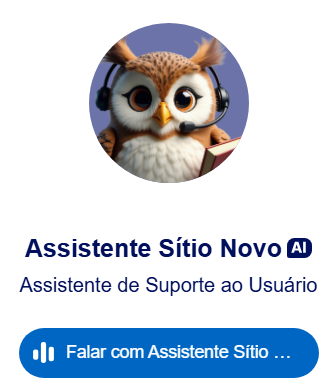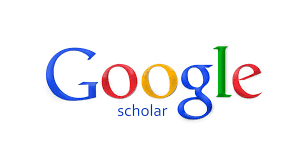Communication as a part of the comprehensive education of students at the Cabo Frio Campus of the Fluminense Federal Institute (IFF)
DOI:
https://doi.org/10.47236/2594-7036.2025.v9.1711Keywords:
Communication, Professional Education, Educommunication, Comprehensive Education, School MagazineAbstract
This article presents the results of a master's research with the objective of investigating how it is possible to contribute to the integral education process of students at the Cabo Frio campus of the Fluminense Federal Institute through communication. To this end, the main Communication Theories and their relationship with the conceptual bases of Professional and Technological Education were studied. An educational product focused on communication was developed with the aim of contributing to the comprehensive education of students at two levels: that of students as readers and that of students participating in its construction, the digital magazine “What iff?”. This is an applied, qualitative and exploratory field research, carried out with students of the Electromechanics Technician course at the Cabo Frio campus of the Fluminense Federal Institute. The research was carried out in three stages. In the first, the participants answered a questionnaire with questions about their perception of communication on campus. Subsequently, the proposed educational product was constructed with the active participation of students from the campus, and finally, the educational product was presented to the students for evaluation with a new questionnaire. The magazine that was created covers topics of interest to the school community, such as information about the structure and operation of the campus, the campus’s history, cultural information, and scientific dissemination with experiments carried out by students. The research with the participants occurred as planned and the information obtained was important for the elaboration of the proposed educational product, which was well evaluated by them.Downloads
Metrics
References
BARDIN, L. Análise de conteúdo. Edições 70, 2012.
BRASIL. Ministério da Educação. Base Nacional Comum Curricular. Brasília, DF: MEC, 2018. Disponível em: http://basenacionalcomum.mec.gov.br/. Acesso em: 17 fev. 2025.
CIAVATTA, M. A formação integrada: a escola e o trabalho como lugares de memória e identidade. In: FRIGOTTO, Gaudêncio; CIAVATTA, Maria; RAMOS, Marise. Ensino médio integrado: concepções e contradições. 3. ed. São Paulo: Cortez 2012. DOI: https://doi.org/10.22409/tn.3i3.p6122
CORDEIRO, R. V.; ALTOÉ, R. O. Fatores comunicacionais para elaboração de produtos/processos educativos em Programas Profissionais de Pós-graduação na área de Ensino/Educação em Ciências e Matemática: reflexões emergentes e em movimento. Amazônia: Revista de Educação em Ciências e Matemáticas, v. 17, n. 39, p. 253-270, 2021. DOI: https://doi.org/10.18542/amazrecm.v17i39.11627
COSTA, Vanessa Pereira; SILVEIRA DE SENNA, Mary Lúcia Gomes; CAVALCANTE, Rivadavia Porto; CASTILHO, Weimar Silva. Transposição didática em propostas de produtos educacionais no mestrado em Educação Profissional e Tecnológica do IFTO. Revista Sítio Novo, Palmas, v. 7, n. 3, p. 5–20, 2023. DOI: 10.47236/2594-7036.2023.v7.i3.5-20p. Disponível em: https://sitionovo.ifto.edu.br/index.php/sitionovo/article/view/1220. Acesso em: 10 jun. 2025. DOI: https://doi.org/10.47236/2594-7036.2023.v7.i3.5-20p
FREINET, C. O jornal escolar. São Paulo: Estampa, 1974.
FREIRE, P. Extensão ou Comunicação?. 17ª ed., Paz e Terra, 1983.
FRIGOTTO, G. Educação e a crise do capitalismo real. 6. ed. São Paulo: Cortez, 2010.
KAPLÚN, G. Material educativo: a experiência de aprendizado. Comunicação & Educação, n. 27, p. 46-60, 2003. DOI: https://doi.org/10.11606/issn.2316-9125.v0i27p46-60
SAMARA, T. Making and breaking the grid: A graphic design layout workshop. Rockport Publishers, 2023.
Downloads
Published
How to Cite
Issue
Section
License
Copyright (c) 2025 Leonardo Pereira da Silva, Raphael Argento de Souza

This work is licensed under a Creative Commons Attribution 4.0 International License.
It allows sharing, adaptation, and use for any purpose, including commercial use, provided proper attribution is given to the authors and to Revista Sítio Novo.
The authors declare that the work is original and has not been previously published, in whole or in part, except on recognized preprint servers, if declared, and that no other similar manuscript authored by them is published or under review by another journal, whether printed or electronic.
They declare that they have not violated or infringed upon any proprietary rights of others, and that all citations in the text are factual or based on research with scientifically significant accuracy.
The authors retain the copyright of the manuscripts published in this journal, allowing unrestricted use of their content, provided that the original authorship and the publication source are properly cited.
















